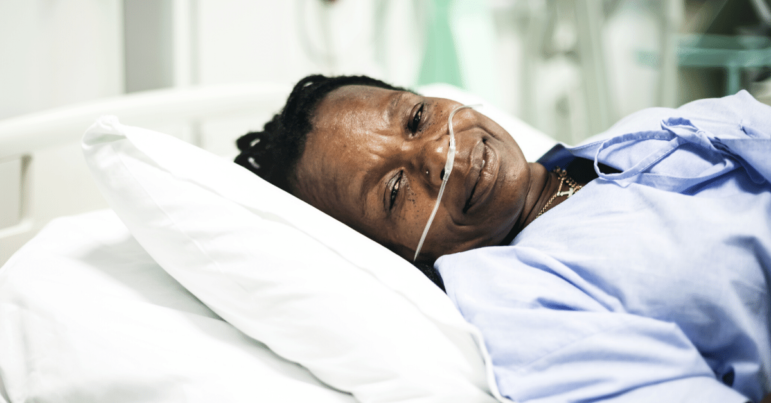When resources are scarce, as they are in this pandemic, decisions about who gets which resources are fraught. In Northern Italy, where the COVID-19 pandemic has hit extremely hard, doctors have had to make heart-wrenching decisions about which patients to put on ventilators. In the U.S., many patients are refused coronavirus tests, and hospitals are revisiting guidelines for resource rationing.
How could bias in health care affect these decisions? Doctors are often taught to assume things about patients based on their age, race, and gender. Then these assumptions are written into their medical record and perpetuated in future visits with other doctors. “We profile people for a living!” said Dr. Neel Shah. “And when our biases work well, we celebrate our ‘intuition.'”
“We profile people for a living! And when our biases work well, we celebrate our ‘intuition.'”
Dr. Neel Shah
For people of color, especially Black people, bias in our health care system impacts their treatment. We see the results in disparities such as greater rates of maternal mortality for Black women and less provision of necessary pain treatment for Black patients.
In a recent interview with Julia Craven at Slate Magazine, Founder and CEO of Advancing Health Equity Dr. Uché Blackstock shared her observations about how bias puts Black people at greater risk of harm from COVID-19.
Who gets a test?
Despite reassurances from the White House that there are no more issues with coronavirus testing, it is obvious that tests are still scarce. Because tests are not available for everyone, hospitals and states have developed their own criteria for who should get tested. However, these criteria are often subject to bias.
Blackstock noted that the original CDC criteria reserved tests for people who had traveled to an country where COVID-19 was present, or had come into contact with someone who already tested positive. In the urgent care center where Blackstock works, most of the patients who said they had traveled abroad were affluent and white. And those most likely to know someone who tested positive were also wealthier, because those people were more able to get tested.
In the absence of criteria, the judgment of administrators about who needs a test may also be subject to bias. There have already been examples of young people of color denied a test because they were deemed to be low-risk, although they exhibited serious coronavirus symptoms. Bassey Offiong, a 25-year-old graduate student living in Detroit, was denied a test several times before eventually dying in the hospital from coronavirus. Jasmine Rodriguez, a 22-year-old woman with asthma in San Antonio, was denied a coronavirus test twice even with her doctor’s recommendation, because her fever “was not high enough.”
On the other hand, some celebrities and wealthy people with access to concierge medicine have been able to get tested. “It shows the peak of our systemic inequities that certain people can be tested so easily,” said Blackstock. “My patients are waiting five to seven days to find out…And these people have jobs.”
The lack of tests and increasing need makes it very difficult to allocate tests fairly, but implicit bias creates an additional disadvantage for people of color who need to get tested for COVID-19.
Who gets an ICU bed?
Doctors in the U.S. are preparing to face the difficult decision of how to allocate relatively small numbers of ICU beds and ventilators. The obvious answer is to use these resources to “save the most lives” but there is no real consensus on what that means.
“How do I distribute them in an equitable manner that tries to honor the approach of the good of the many versus the good of the few? Does it mean lives saved, years of life saved or quality of life?” asked Dr. Christopher Colwell, the chief of emergency medicine at Zuckerberg San Francisco General Hospital, in the Los Angeles Times. “There’s not a black and white answer.”
“Does it mean lives saved, years of life saved, or quality of life? There’s not a black and white answer.”
Dr. Christopher Colwell
New York state’s guidelines recommend prioritizing “patients for whom ventilator therapy would most likely be lifesaving.” However, others fear that this would put poorer people and people of color at a disadvantage because they are more likely to have underlying chronic health conditions. Using a random lottery would help avoid these biases, health professionals have pointed out.
But mostly, it feels wrong for a society to say someone is, by some factors, less deserving of precious resources than others when that society manufactured – through direct harm or neglect – many of the conditions leading to those factors…
— Andrew Goldstein (@AndrewMakeTweet) March 31, 2020
It is likely that rationing resources–even when there is a protocol in place–could exacerbate inequalities. “When it’s time for clinicians to ration resources, I think we can already assume that Black patients are going to be disadvantaged because they’re not going to be listened to,” said Blackstock. “They’re going to be disadvantaged because even if you say we’re going to use a certain protocol, which we’re saying is objective, it’s not really objective. It has bias embedded in it.”
Like test criteria, algorithms to allocate health resources can unintentionally reproduce health disparities. For example, an algorithm used to measure health needs was found to label Black patients as less sick, because fewer health care dollars had previously been spent on their care.
Dr. Dhruv Khullar, assistant professor at Weill Cornell Medicine, expressed his concern in a New York Times op-ed last year about the potential for algorithms to create more inequities: “If, for example, poorer patients do worse after organ transplantation or after receiving chemotherapy for end-stage cancer, machine learning algorithms may conclude such patients are less likely to benefit from further treatment — and recommend against it.”
There are no easy solutions to reducing bias, but policymakers and health professionals must acknowledge and work to prevent the potential harm that bias may create during this pandemic.
